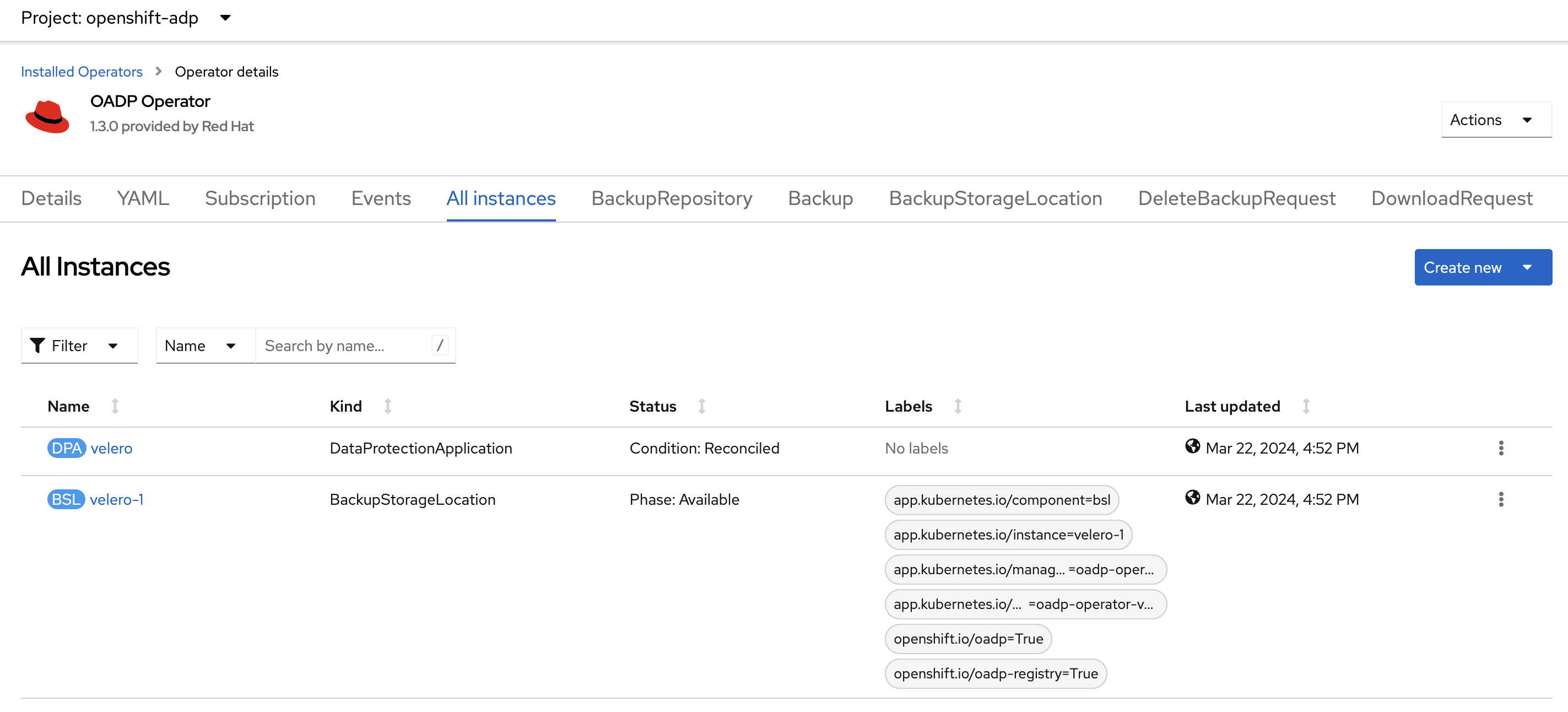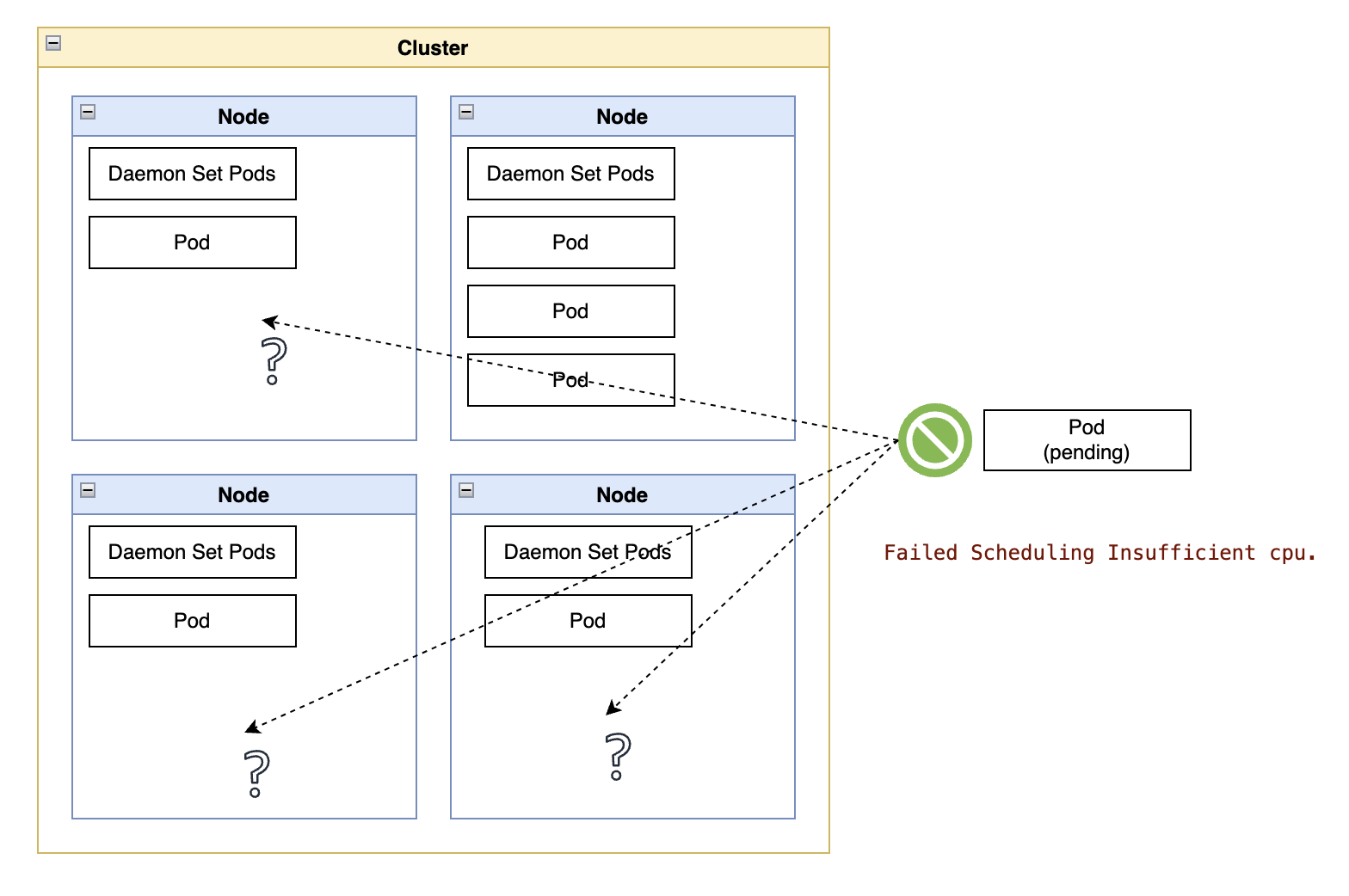Using ODF object buckets as OADP backup storage locations
Context
This technote covers the configuration of an OADP backup destination using an object bucket in OpenShift Data Foundation.
OpenShift API for Data Protection is a downstream project of Velero and is a disaster recovery layer covering OpenShift Container Platform applications, cluster resources, persistent volumes, and internal images.
The instructions in OADP documentation for configuration with ODF are good, but do not entirely cover the exact linkage between the OADP BackupStorageLocation and an ODF ObjectBucket.
Steps
Create the ODF Object Bucket
Create a new object bucket by creating a new ODF ObjectBucketClaim.
cat <<EOF | oc apply -f -
apiVersion: objectbucket.io/v1alpha1
kind: ObjectBucketClaim
metadata:
name: oadp-object-bucket
namespace: openshift-adp
spec:
generateBucketName: oadp-object-bucket
objectBucketName: obc-openshift-adp-oadp-object-bucket
storageClassName: ocs-storagecluster-ceph-rgw
EOF
oc wait ObjectBucketClaim oadp-object-bucket \
-n openshift-adp \
--for=jsonpath='{.status.phase}'=Bound

ODF then creates the actual ObjectBucket instance AND the corresponding Secret for the bucket with the AWS-like credentials to access the bucket:
apiVersion: objectbucket.io/v1alpha1
kind: ObjectBucket
metadata:
...
name: obc-openshift-adp-oadp-object-bucket
spec:
...
endpoint:
bucketHost: rook-ceph-rgw-ocs-storagecluster-cephobjectstore.openshift-storage.svc
bucketName: oadp-object-bucket-51cc2dd6-937b-4521-a6e9-160eb19a6a44
bucketPort: 443
region: ''
subRegion: ''
storageClassName: ocs-storagecluster-ceph-rgw
status:
phase: Bound
Secret:
kind: Secret
apiVersion: v1
metadata:
name: oadp-object-bucket
namespace: openshift-adp
labels:
bucket-provisioner: openshift-storage.ceph.rook.io-bucket
data:
AWS_ACCESS_KEY_ID: ...
AWS_SECRET_ACCESS_KEY: ...
type: Opaque

Create the cloud-credentials
The Secret for BackupStorageLocation has a slightly different format than the Secret created by ObjectBucketClaim, so we need to make that transformation.
The original secret data created by ODF looks like this:
AWS_ACCESS_KEY_ID: ...
AWS_SECRET_ACCESS_KEY: ...
But OADP expects the secret data to be formatted like this:
[default]
aws_access_key_id=...
aws_secret_access_key=...
The following commands make that transformation:
oc create secret generic cloud-credentials \
--namespace openshift-adp \
--from-literal=cloud="$(cat << EOF
[default]
aws_access_key_id=$(oc get secret oadp-object-bucket --template="{{index .data.AWS_ACCESS_KEY_ID | base64decode}}")
aws_secret_access_key=$(oc get secret oadp-object-bucket --template="{{index .data.AWS_SECRET_ACCESS_KEY | base64decode}}")
EOF
)" \
--dry-run=client \
-o yaml \
| oc apply -f -
Create the Data Protection Application
Configure the OADP DataProtectionApplication with those values (see them under .spec.backupLocations.velero.config):
s3_host=$(oc get ObjectBucket obc-openshift-adp-oadp-object-bucket \
-n openshift-adp \
-o jsonpath={.spec.endpoint.bucketHost})
s3_port=$(oc get ObjectBucket obc-openshift-adp-oadp-object-bucket \
-n openshift-adp \
-o jsonpath={.spec.endpoint.bucketPort})
s3_bucket=$(oc get ObjectBucket obc-openshift-adp-oadp-object-bucket \
-n openshift-adp \
-o jsonpath={.spec.endpoint.bucketName})
cat <<EOF | oc apply -f -
apiVersion: oadp.openshift.io/v1alpha1
kind: DataProtectionApplication
metadata:
name: velero
namespace: openshift-adp
spec:
backupLocations:
- velero:
config:
insecureSkipTLSVerify: 'true'
profile: default
region: local
s3ForcePathStyle: 'true'
s3Url: https://${s3_host:?}:${s3_port:?}
credential:
key: cloud
name: cloud-credentials
default: true
objectStorage:
bucket: ${s3_bucket}
prefix: velero
provider: aws
configuration:
nodeAgent:
enable: true
uploaderType: restic
velero:
defaultPlugins:
- openshift
- aws
- kubevirt
EOF

Validation
Create a new OADP Backup object:
cat <<EOF | oc apply -f -
apiVersion: velero.io/v1
kind: Backup
metadata:
name: backup-test
namespace: openshift-adp
spec:
csiSnapshotTimeout: 10m0s
defaultVolumesToFsBackup: true
defaultVolumesToRestic: true
includedNamespaces:
- default
itemOperationTimeout: 4h0m0s
snapshotMoveData: false
storageLocation: velero-1
ttl: 720h0m0s
EOF
Wait for it to be completed:
oc wait Backup backup-test \
-n openshift-adp \
--for=jsonpath='{.status.phase}'=Completed
If successful, delete the backup. OADP will automatically delete the DeleteBackupRequest CR once the original Backup object is deleted.
cat <<EOF | oc apply -f -
apiVersion: velero.io/v1
kind: DeleteBackupRequest
metadata:
name: deletebackuprequest
namespace: openshift-adp
spec:
backupName: backup
EOF
If all commands execute successfully, your OADP configuration will work correctly and send backup contents to the object bucket in the ODF Storage Cluster.



